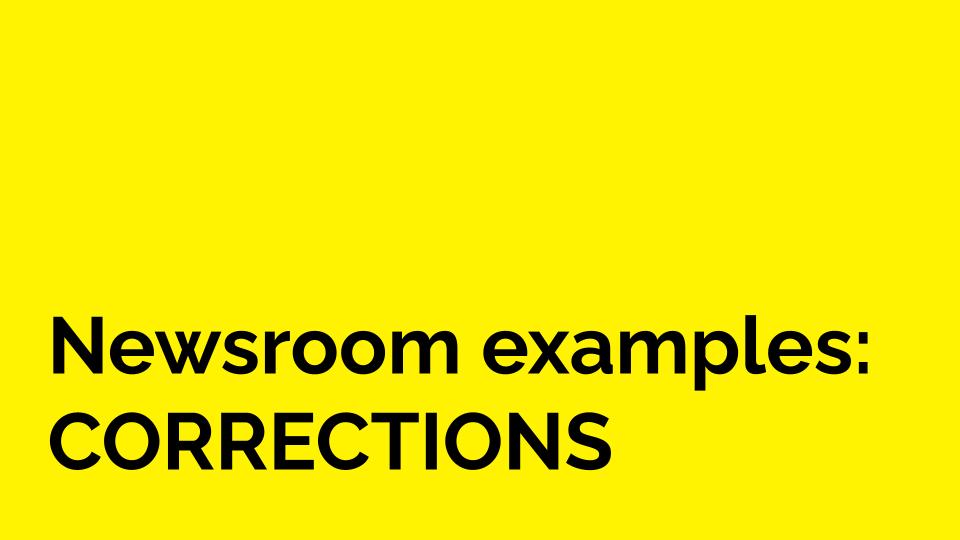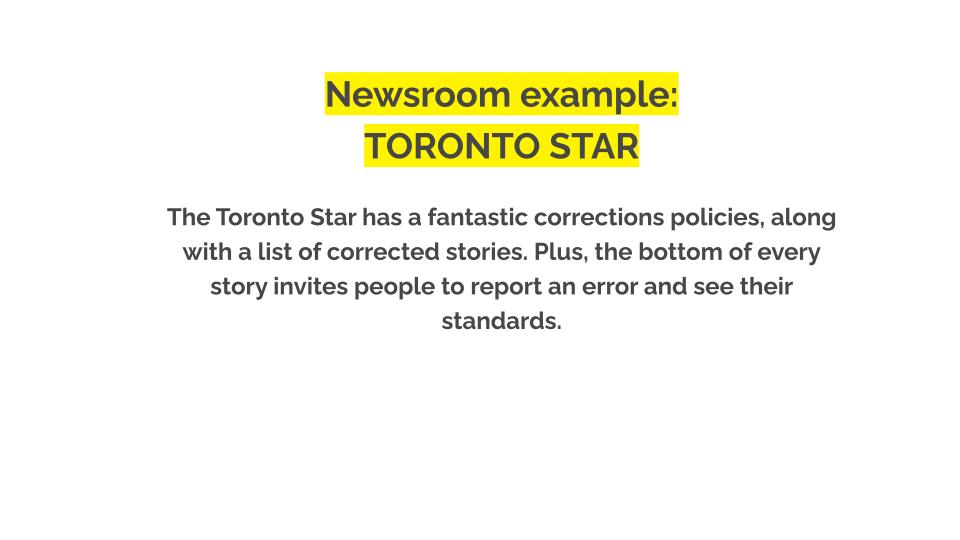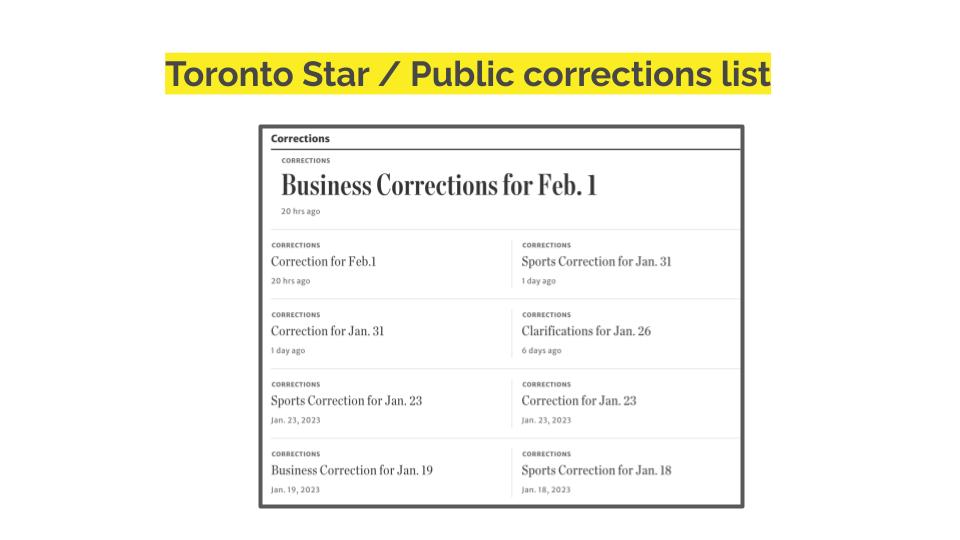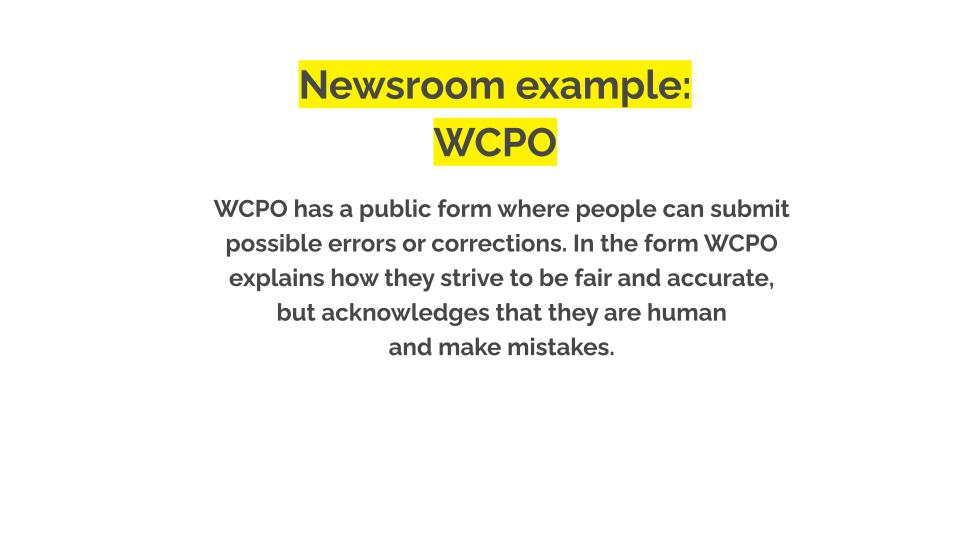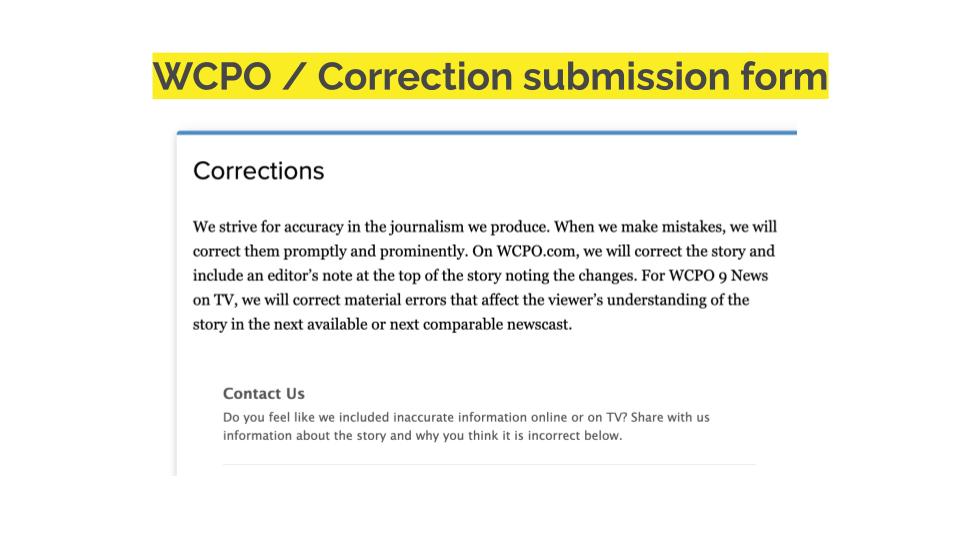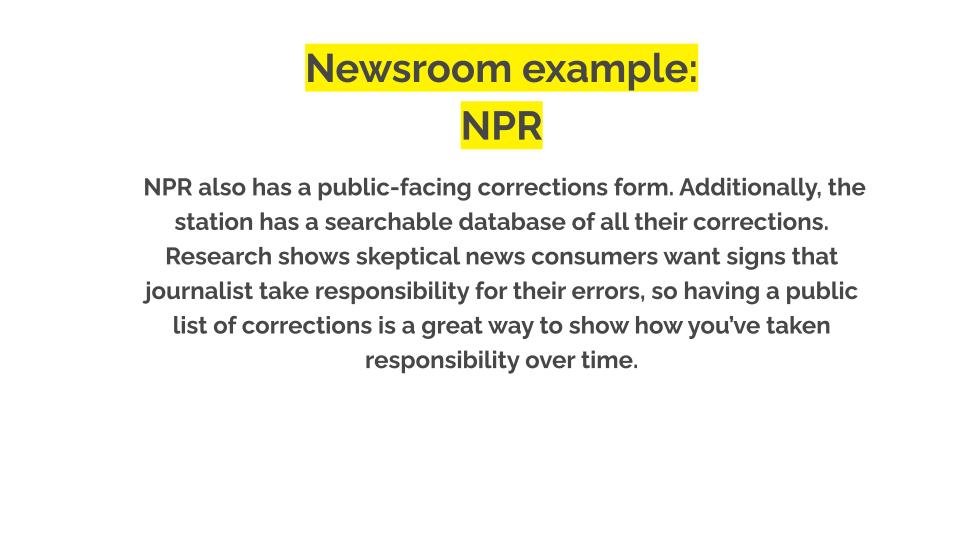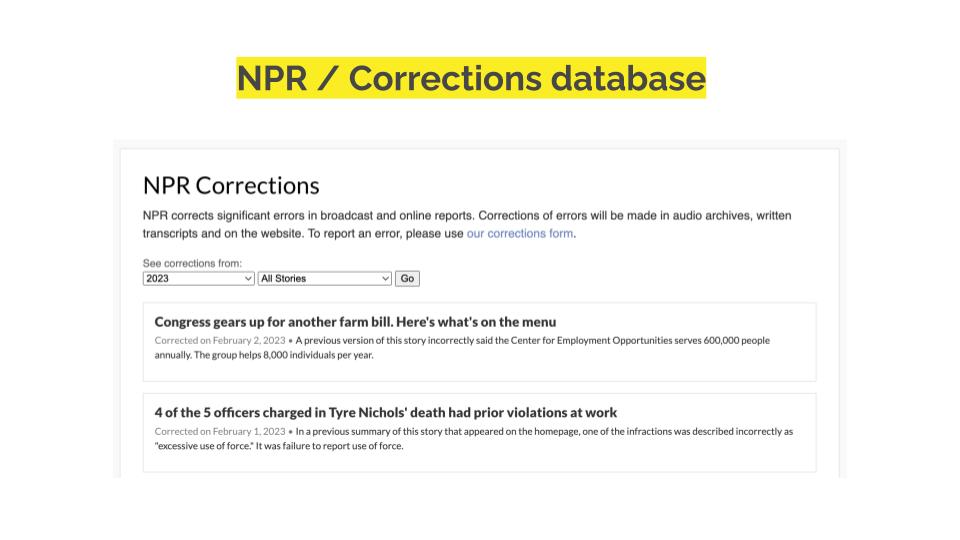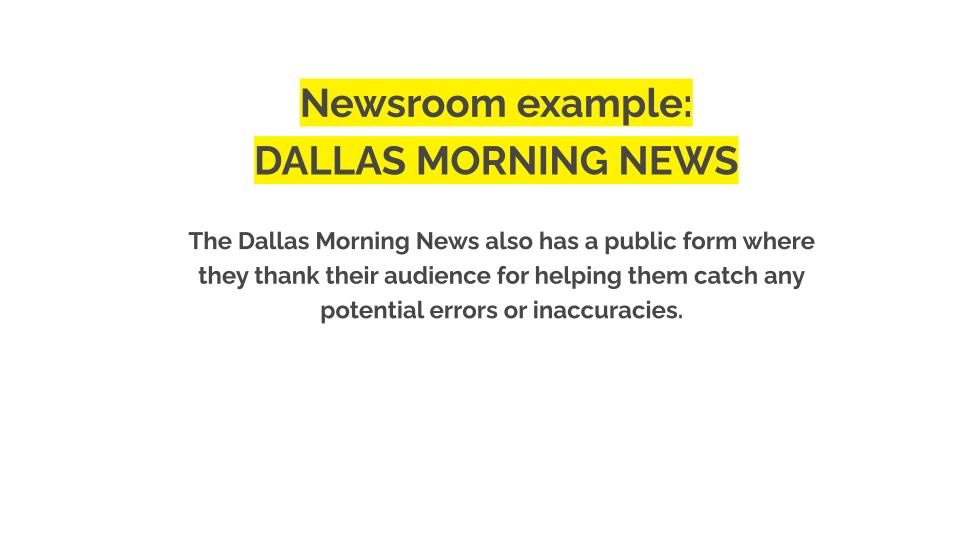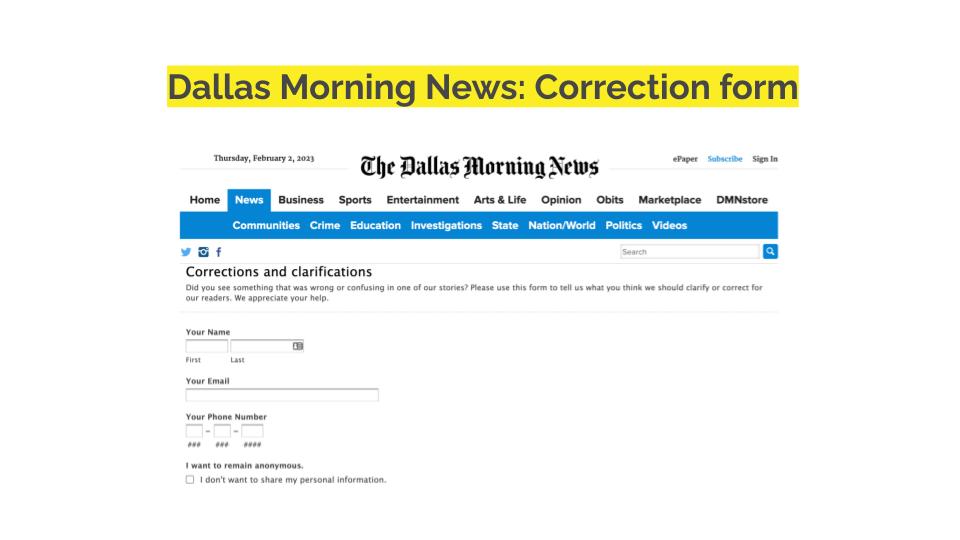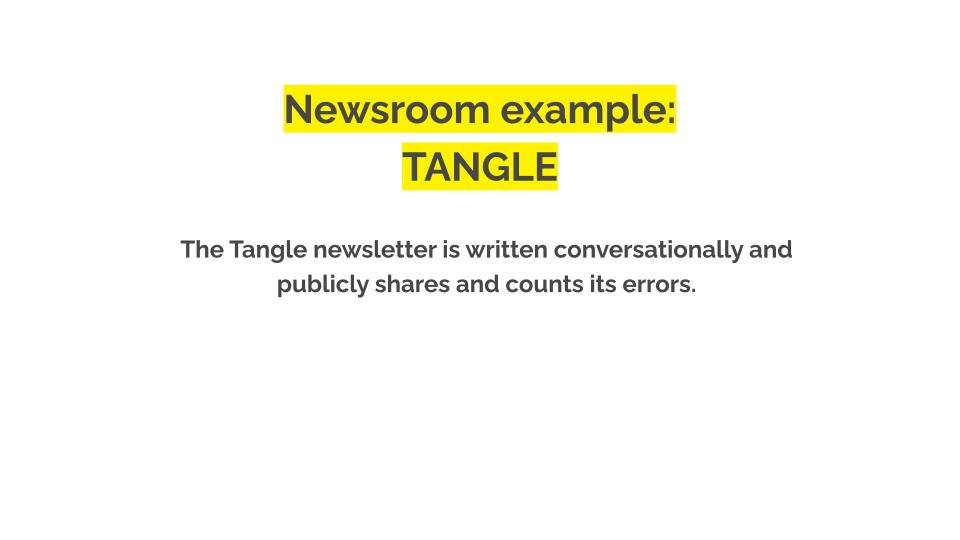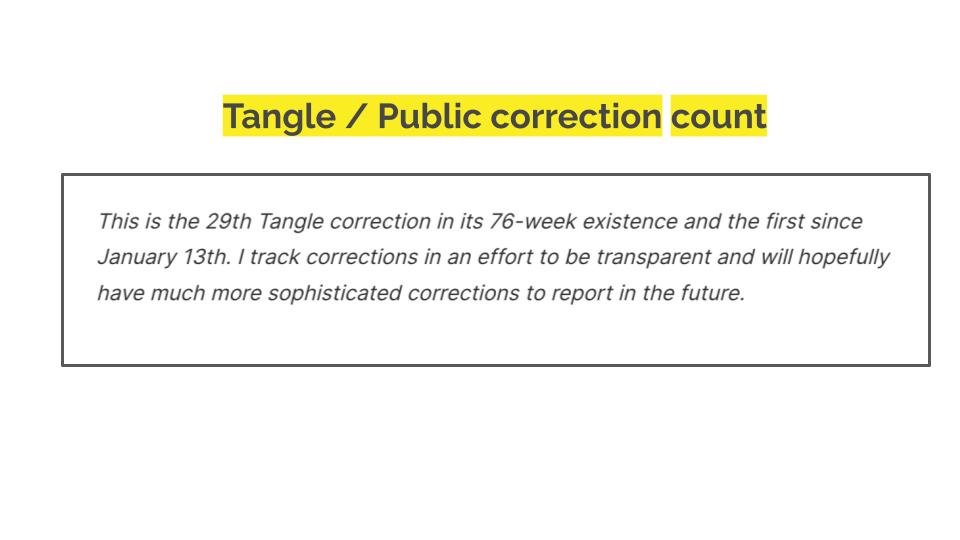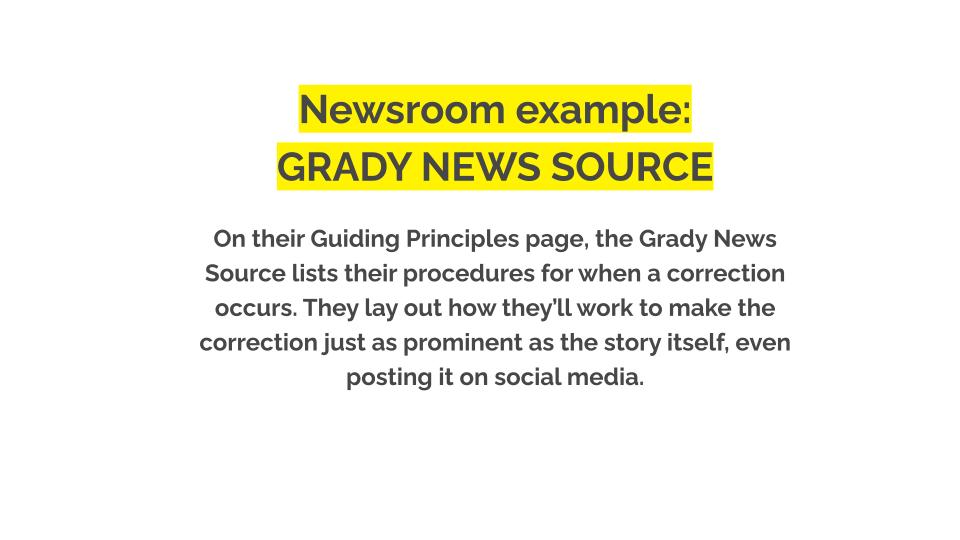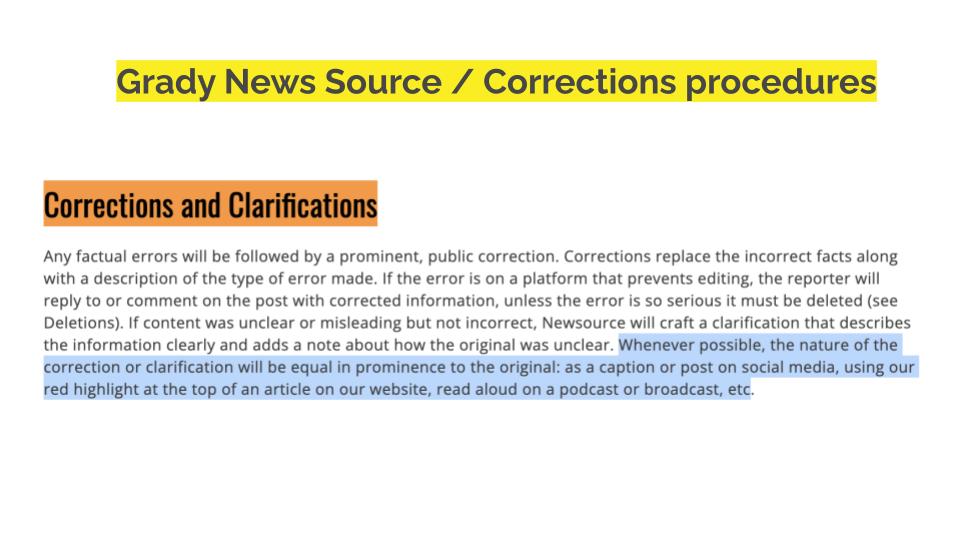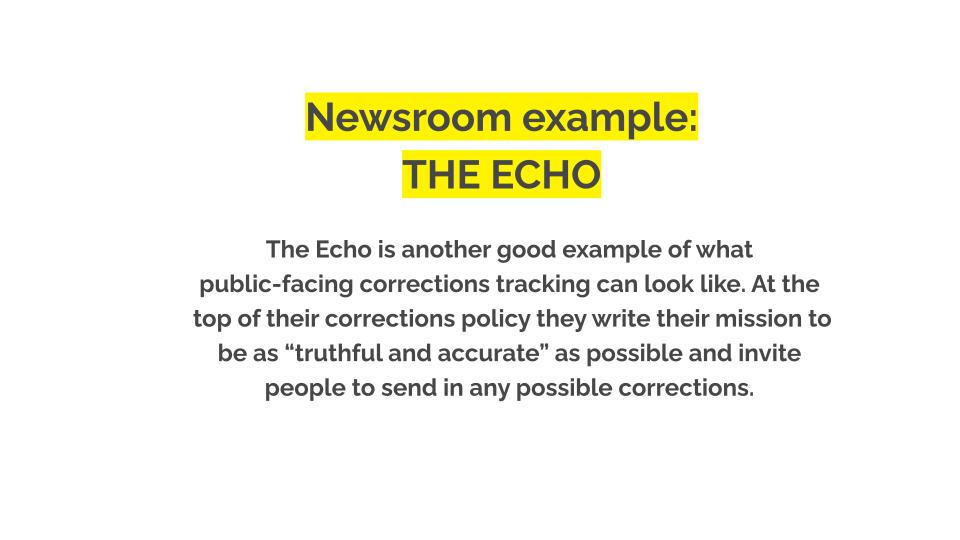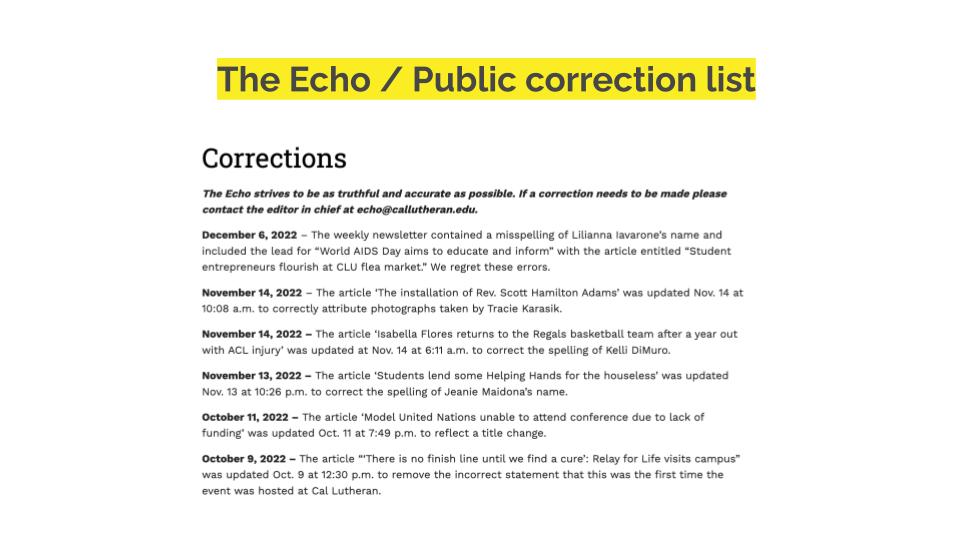ETHICS & FAIRNESS
CORRECTIONS
As journalists, we care deeply about being accurate in our reporting and getting the facts right. Despite our best efforts though, we still sometimes get it wrong. That could mean a grammatical error or misspelled word, or it could mean something more serious. We might misquote a budget figure, misidentify someone accused of a crime or say someone has died when they are actually still alive.
While the severity of the mistake might influence how we react and what our users see, this most important principle should apply: Our users should know we take accuracy seriously and if we get something wrong, we will correct it publicly and be guided by consistent policies and processes.
But that’s not always happening. Research shows fewer than half of U.S. adults say journalists admit and take responsibility for their mistakes at least some of the time. And people with low trust in the news cite a lack of faith in news outlets’ accuracy and the perception that journalists don’t own up to their errors as part of the problem.
So what can journalists do?
First, we recommend you get on the record with your corrections policy. Then, share it publicly, and point to it each time you make a correction or a clarification.
Most journalists make corrections, and we usually have standards around these corrections. We just don’t do a good job of letting the public know what those standards are.

Goals
This Trust Kit helps you assess how easy it is for your users to:
- understand your process for correcting errors
- know when a story has been corrected
- know why a story has been corrected
- understand your commitment to accuracy
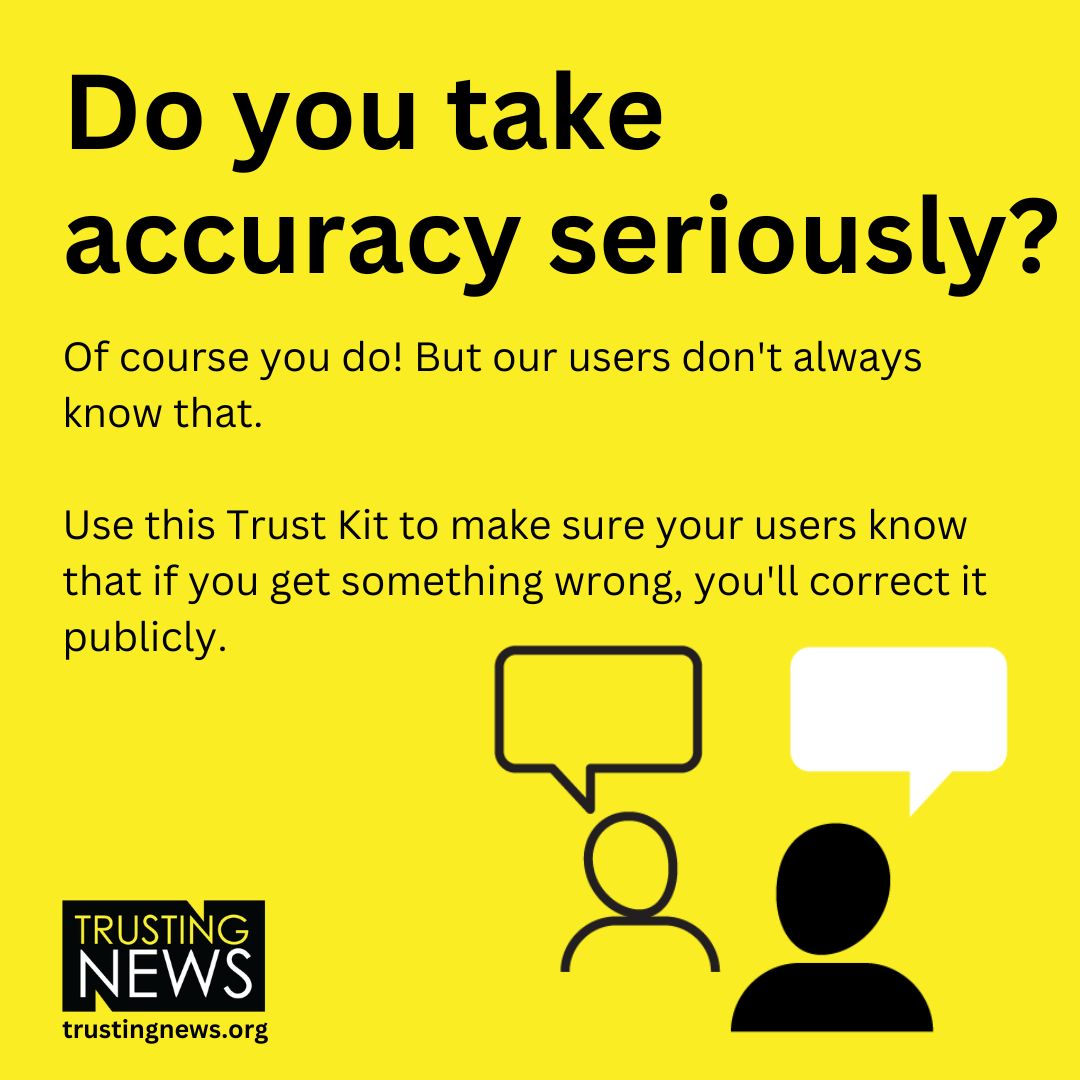

Take action
Use the below list of questions to start assessing your organization’s process and clarity around corrections. Click or tap the blue boxes to expand each section.
Step 1: Assess your INTERNAL policies
Which of the following elements are included in your INTERNAL corrections policy? Check all that apply.
Whether you have any standards around timeliness, or whether archive stories are corrected.
How corrections are consistently written and labeled, with example language.
How a correction differs from any similar elements, such as a clarification or retraction, if used.
An expression of regret for the error
Step 2: Assess your EXTERNAL policies
Which of the following elements are included in your PUBLIC FACING corrections policy? Check all that apply.
Whether you have any standards around timeliness, or whether archive stories are corrected.
How corrections are consistently written and labeled, with example language.
How a correction differs from any similar elements, such as a clarification or retraction, if used.
An expression of regret for the error
Then ask yourself:
If any elements are in an internal policy but not a public-facing policy: why is that? Find out what you can about resistance to including more detail publicly. Is it a newsroom decision? A publisher or general manager decision? A corporate decision? Based on legal advice?
Step 3: Consider your style
Use the questions below to learn more about how your corrections are written.
- What guidance are you given about how to write corrections?
- How would you describe how your corrections are written?
- In your corrections, does the word “correction” appear?
- Are the corrections easy to understand, or do they read like they are working hard to not actually say very much? Do they leave users understanding what was wrong and what the correct information is?
- How’s the tone? Do the corrections seem like they were written by a human, not a robot?
Step 4: Think about your placement
Use the questions below to learn more about how prominently corrections are featured on your website. (For the following questions, consider stories in text, photo, video and graphic formats. Describe where precisely corrections appear on these platforms.)
- Where and how prominently are corrections featured on your website?
- Where and how prominently are corrections featured in print products?
- Where and how prominently are corrections featured in broadcast products?
- Where and how prominently are corrections featured in your newsletters?
- Social platforms offer different options for corrections. List each social platform you use to share content (Facebook, Instagram, Twitter, TikTok, YouTube, etc.) Then answer the following questions for each.
- What are your standard practices for correcting errors to text posted on the platform?
- What are your standard practices for correcting errors to images and videos (including stories) on the platform?
Step 5: Examine how the public can report errors
Use the questions below to help determine how easy it is for the public to contact your newsroom if they spot an error.
- Does your website include an invitation for people to let you know if they spot an error? If so, what does it say, and where is it on the site?
- Does an invitation to report an error appear on story pages on your website?
- Does an invitation to report an error, or a mention of corrections, appear on your home page?
- Does an invitation to report an error, or a mention of corrections, appear in the menus in your header or footer?
- Does an invitation to report an error appear on other platforms (print, broadcast, newsletters, social, etc.)?
- Anywhere you accept messages from the public is a place where they could let you know you’ve gotten something wrong. How confident are you that if a social media message, newsletter, reply, etc., included a correction request, it would make it to the right person?
- In what ways can people submit an error? Is there an online form? An email address? A phone number?
Step 6: Evaluate your newsroom culture
Use these questions to help you better understand your newsroom’s culture around corrections.
- How would you describe how corrections are handled internally? Are employees shamed or reprimanded for acknowledging errors? Are they thanked for coming clean about them?
- Describe your internal workflow for reporting corrections. Is it easy, logistically, to get errors corrected?
- Is someone in your newsroom in charge of corrections — approving them individually, or supervising them more generally? If so, what is that person’s role overall, and what is the process for getting them involved?

When you’re done:
Reflect on your findings overall: Gather a group of people from your newsroom and discuss the following questions.
- In general, how easy would it be for audience members to know a story has been corrected, across platforms? What is working well? Where do you have room for improvement?
- In general, how easy would it be for audience members to report when they think you’ve gotten something wrong, across platforms? What is working well? Where do you have room for improvement?
- After going through this exercise, what would you most like to improve about your corrections process?
- Are there obstacles to improving your corrections process within your organization? If so, what are they?
- How likely are your ideas to get adopted? What support from Trusting News would be useful?
See how other newsrooms do it
For inspiration, here are some examples of how newsrooms are sharing their corrections policies and talking publicly about how they make corrections. For more newsroom examples, check our our newsroom example database.

We’re here to help!
Congratulations on getting this far in the Trust Kit! 🎉 We know taking the steps to earn trust isn’t always simple or easy. It takes time and often requires a shift in newsroom routines or workflows.
Any progress you make on implementing strategies in this Trust Kit should be celebrated as a win!
This guide draws from an American Press Institute report by Craig Silverman: How to correct website and social media errors effectively. (Trusting News is a project of API and the Reynolds Journalism Institute.)

